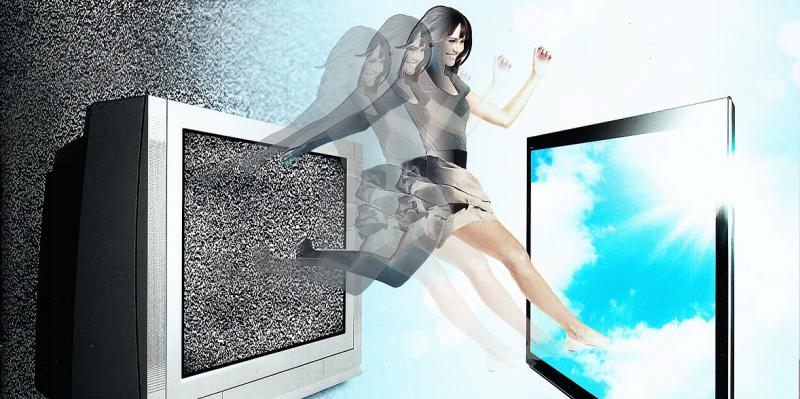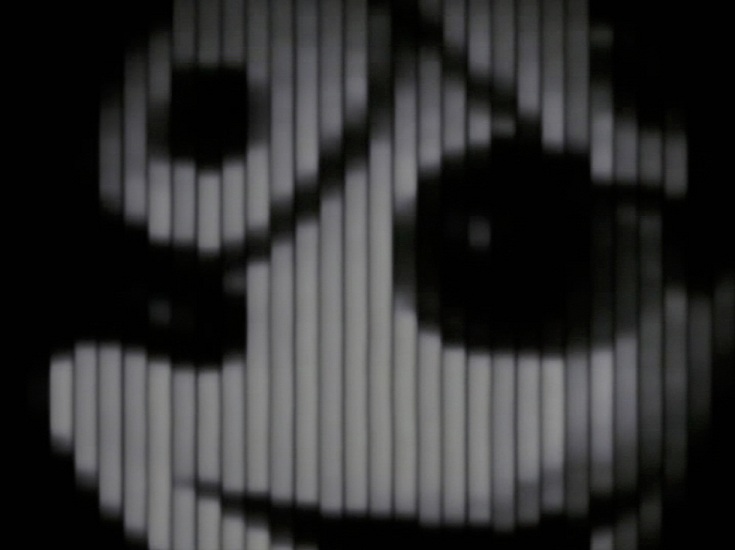Remote Control, ICA | reviews, news & interviews
Remote Control, ICA
Remote Control, ICA
An exhibition exploring how artists over the last four decades have engaged with television

Remote Control and its accompanying series of events, Television Delivers People, coincides with the analogue to digital switch-over, marking a shift in the history of a medium which will soon be eclipsed by on-demand content. While this may sound mundane on paper, the humble light-emitting box has been the elephant in the room for the last half-century, profoundly transforming living habits and shaping political discourse.
The exhibition is torn between two poles: on the one hand is the physicality of the equipment, and on the other how the medium is used for artistic ends
The exhibition is torn between two poles: on the one hand is the physicality of the equipment, and on the other how the medium is used for artistic ends. Indicative of the former are Matias Faldbakken's rough-shod casts of flat-screen television sets presented with partial cardboard and wood casing. These stained and fractured ghosts are evocative of urban decay but textured with the moulded contours of consumer technology. Then there’s Simon Denny’s remnants of a huge, now obsolete analogue TV transmitter, which, with its defunct switches and levers, occupies a central place in the gallery. But beyond its impressive size, it's not really adding much to the discourse.
Beside this mass of old technology are artists' TV projects, each of which you can watch with a single pair of headphones and totalling up several hours of footage. Richard Serra's Television Delivers People, 1973, a bizarre addition to this sculptor's oeuvre, is a polemic against the medium. White text floats up a blue screen while muzak plays, informing us that "You are the product of TV... You are delivered to the advertiser who is the customer". It attempts to do what Serra accuses corporations of doing (changing our behaviour), but with less success.
 Serra’s sloganeering can’t match the nuances and complexity of the medium, and more compelling are the artistic deconstructions of televisual language. Stuart Marshall’s The Love Show, 1979, examines constructions of sexuality, as does Joan Braderman’s satire of Dynasty, whilst KRIWET takes on that seminal moment of communal television-watching: the 1969 moon landing. Surprisingly, Andy Warhol and Chris Burden, two major artists who notoriously ventured into the medium, are not present.
Serra’s sloganeering can’t match the nuances and complexity of the medium, and more compelling are the artistic deconstructions of televisual language. Stuart Marshall’s The Love Show, 1979, examines constructions of sexuality, as does Joan Braderman’s satire of Dynasty, whilst KRIWET takes on that seminal moment of communal television-watching: the 1969 moon landing. Surprisingly, Andy Warhol and Chris Burden, two major artists who notoriously ventured into the medium, are not present.
Works upstairs mostly synthesise the physicality of equipment and television images. Taryn Simon’s Alhurra TV Broadcast Studio, Springfield, Virginia, 2006-07, reveals TV’s place in the soft-power strategy of the war on terror. We see an Arab channel funded by the US congress and broadcasting from the heart of America. A female newsreader sits serenely in profile under the gaze of floating cameras while on a background screen a masked man holds an enormous rocket-propelled grenade up to a far remote camera. Richard Hamilton’s famous image of the TV-mediated Kent State massacre is here, as is Mark Leckey’s Felix Gets Broadcasted, 2007 (still pictured above right), a beautifully shot film of an early test card machine.
In his 2007 book Feedback: Television Against Democracy, art historian David Joselit argued that in a world where democracy is conducted through images, art history has the capacity to become a political science. It’s a bold and true statement, but the problem with this show is that while it comes good on giving us a decent survey of artistic responses to TV, it doesn’t give them enough thematic context. It’s an ambitious show for the weakened ICA and credit is due, but a subject like this needs a major museum’s attention.
- Remote Control at the ICA until 10 June
rating
Explore topics
Share this article
The future of Arts Journalism
You can stop theartsdesk.com closing!
We urgently need financing to survive. Our fundraising drive has thus far raised £49,000 but we need to reach £100,000 or we will be forced to close. Please contribute here: https://gofund.me/c3f6033d
And if you can forward this information to anyone who might assist, we’d be grateful.

Subscribe to theartsdesk.com
Thank you for continuing to read our work on theartsdesk.com. For unlimited access to every article in its entirety, including our archive of more than 15,000 pieces, we're asking for £5 per month or £40 per year. We feel it's a very good deal, and hope you do too.
To take a subscription now simply click here.
And if you're looking for that extra gift for a friend or family member, why not treat them to a theartsdesk.com gift subscription?
more Visual arts
 'We are bowled over!' Thank you for your messages of love and support
Much-appreciated words of commendation from readers and the cultural community
'We are bowled over!' Thank you for your messages of love and support
Much-appreciated words of commendation from readers and the cultural community
 Folkestone Triennial 2025 - landscape, seascape, art lovers' escape
Locally rooted festival brings home many but not all global concerns
Folkestone Triennial 2025 - landscape, seascape, art lovers' escape
Locally rooted festival brings home many but not all global concerns
 Sir Brian Clarke (1953-2025) - a personal tribute
Remembering an artist with a gift for the transcendent
Sir Brian Clarke (1953-2025) - a personal tribute
Remembering an artist with a gift for the transcendent
 Emily Kam Kngwarray, Tate Modern review - glimpses of another world
Pictures that are an affirmation of belonging
Emily Kam Kngwarray, Tate Modern review - glimpses of another world
Pictures that are an affirmation of belonging
 Kiefer / Van Gogh, Royal Academy review - a pairing of opposites
Small scale intensity meets large scale melodrama
Kiefer / Van Gogh, Royal Academy review - a pairing of opposites
Small scale intensity meets large scale melodrama
 Jenny Saville: The Anatomy of Painting, National Portrait Gallery review - a protégé losing her way
A brilliant painter in search of a worthwhile subject
Jenny Saville: The Anatomy of Painting, National Portrait Gallery review - a protégé losing her way
A brilliant painter in search of a worthwhile subject
 Abstract Erotic, Courtauld Gallery review - sculpture that is sensuous, funny and subversive
Testing the boundaries of good taste, and winning
Abstract Erotic, Courtauld Gallery review - sculpture that is sensuous, funny and subversive
Testing the boundaries of good taste, and winning
 Edward Burra, Tate Britain review - watercolour made mainstream
Social satire with a nasty bite
Edward Burra, Tate Britain review - watercolour made mainstream
Social satire with a nasty bite
 Ithell Colquhoun, Tate Britain review - revelations of a weird and wonderful world
Emanations from the unconscious
Ithell Colquhoun, Tate Britain review - revelations of a weird and wonderful world
Emanations from the unconscious
 Rachel Jones: Gated Canyons, Dulwich Picture Gallery review - teeth with a real bite
Mouths have never looked so good
Rachel Jones: Gated Canyons, Dulwich Picture Gallery review - teeth with a real bite
Mouths have never looked so good
 Yoshitomo Nara, Hayward Gallery review - sickeningly cute kids
How to make millions out of kitsch
Yoshitomo Nara, Hayward Gallery review - sickeningly cute kids
How to make millions out of kitsch
 Hamad Butt: Apprehensions, Whitechapel Gallery review - cool, calm and potentially lethal
The YBA who didn’t have time to become a household name
Hamad Butt: Apprehensions, Whitechapel Gallery review - cool, calm and potentially lethal
The YBA who didn’t have time to become a household name

Add comment